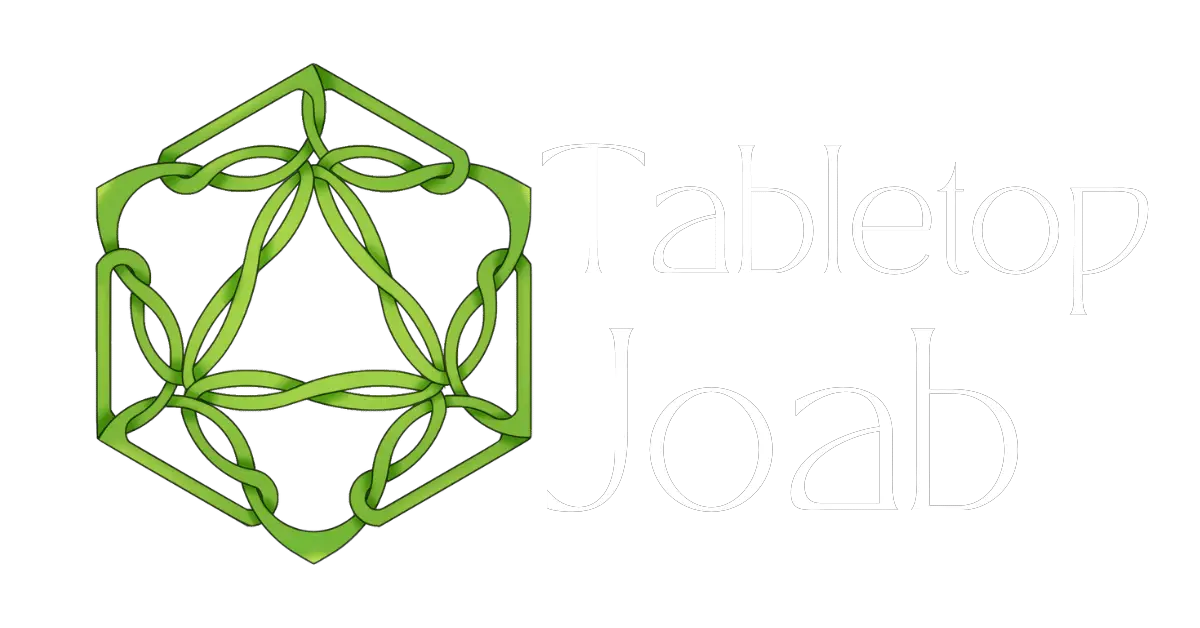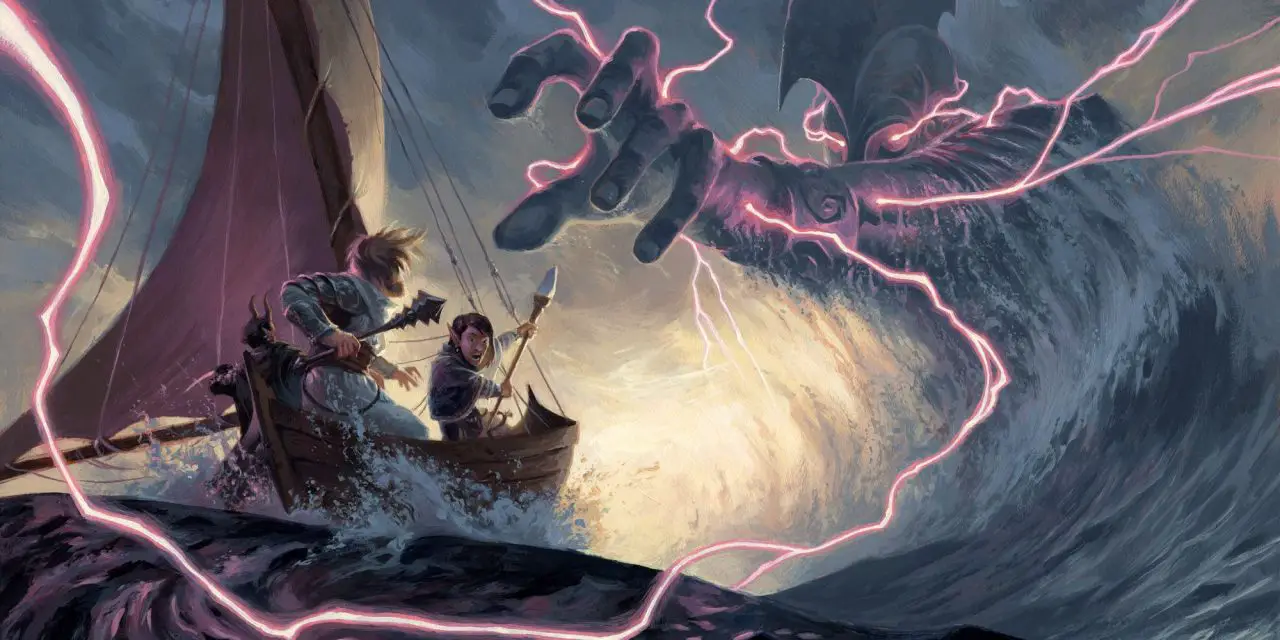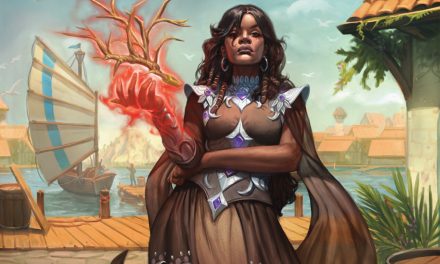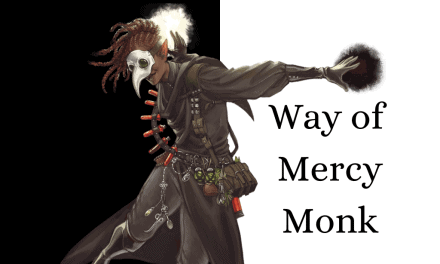Calling forth the might and power of storms, the Tempest Cleric in D&D 5e is a force of nature. Literally!
With howling winds, crashing lightning, and roaring thunder, Tempest Clerics are anything but discreet. To stand against one is to stand the power of the elements themselves!
Whether you’re looking to play as Thor or something totally unique, this is your chance to become the storm incarnate.
But it takes a great deal of inner strength to tame such powers.
Simply answering the call of a deity of the Tempest Domain does not mean that you won’t find your powers and resolve!
Indeed, these deities hold their Clerics to a high standard. Will you rise above and become the storm, or will you find yourself crushed and broken by the storm’s waves?
Don’t fear, dear friend. I’ve got you covered!
This is the full subclass guide to the Tempest Cleric in D&D 5e!
What is the Tempest Cleric in D&D 5e?
Few would deny the incredible power of storms, but few fear them more than sailors and those who live on coasts.
Those who rely on the sea pray to the fickle deities who rule over the waves for safe passage and full fishing nets. They live with a mixture of fear and respect so as not to provoke these deities’ wrath.
Between these people and deities stand Tempest Clerics.
Some Tempest Clerics stand on the side of the people who inhabit and traverse the domains of the Gods and Goddesses of the sea and storms. They commune with these deities and present offerings to appease them which the deities commonly accept gladly.
Furthermore, they take an active role in ensuring that everyone in such locations acts righteously. Otherwise, the punishment they receive may well threaten everyone in the community or on the ship.
Other Tempest Clerics choose a different stance. They see the raw might of these deities and gladly serve them.
These Clerics spread the word of their deities and gather offerings from people with threats of thunderbolts, tidal waves, and other forms of divine wrath.
With entire cities being lost to the wrath of storm deities, few would dare to defy them!
Deities commonly revered by Tempest Clerics include:
- Talos, God of Storms and Destruction
- Umberlee, Goddess of the Sea
- Kord, God of Storms, Battle, and Warfare in Greyhawk
- Zeboim, Goddess of seas, storms, and strife in Dragonlance
The Tempest Cleric is one of the options available to Clerics in the 5e Player’s Handbook.
Role in the Party
Tempest Clerics fit an aggressive playstyle.
With their heavy armor and martial weapon proficiency, they’re durable enough to stand on the party’s front line.
Meanwhile, the features offered by the Tempest Domain help the Tempest Cleric to supercharge their damage output and punish enemies who get too close.
Not to cheapen the experience, they also gain spells that can cause chaos in large chunks of the battlefield. Some work as crowd control, others offer explosive damage, and some even do both!
Especially if there is a large group of enemies attacking the party, the Tempest Cleric can have a field day.
After all, you have to be both brave AND strong if you want to stand against a storm!
That said, Tempest Clerics don’t offer anything in the way of healing or utility beyond the base Cleric class features. While these characters are certainly capable of healing party members, their primary focus is on dealing damage.

Tempest Cleric Features 5e
Much like a growing storm, the Tempest Cleric’s features build on each other to get more intense with each level.
As we covered in the last section, you’re going to want to be at the front of the party. The key to getting the most value out of your features is to play aggressively and hit hard.
With that said, let’s check out the swanky features you’ll be getting from the Tempest Domain!
Also Check Out: Using Turn and Destroy Undead in D&D 5e
Tempest Domain Spells
Every Divine Domain (Cleric subclass) also comes with its own unique list of bonus spells. These are called Domain Spells.
You gain these Domain Spells when you hit the level on the table below. These spells are considered to always be prepared for you and they don’t count against the number of spells you can prepare each day.
Some Domain Spell lists might include spells that aren’t normally on the Cleric spell list. In these cases, the spell counts as a Cleric spell for you and uses your Wisdom modifier as the spellcasting ability.
So, let’s check out what you get for choosing the Tempest Domain!
| Cleric Level | Domain Spells |
| 1 | Fog Cloud, Thunderwave |
| 3 | Gust of Wind, Shatter |
| 5 | Call Lightning, Sleet Storm |
| 7 | Control Water, Ice Storm |
| 9 | Destructive Wave, Insect Plague |
Considering the Tempest Cleric’s role in the party, I’m a fan of most of the options on this spell list.
You get some good offensive options, but most of these are geared more towards AoE control. Big effects that section off whole areas of the encounter map are the Tempest Cleric’s favorite!
Thoughts on the Tempest Cleric Spell List
If you find yourself getting swarmed by enemies, Thunderwave is useful for getting some breathing room. Meanwhile, Fog Cloud is a reliable way to block enemies’ vision, give your party some cover, or make a quick escape.
The usefulness of Gust of Wind will vary from situation to situation. It can disperse effects like poison gas or be used to throw weaker enemies around like rag dolls.
Shatter deals solid thunder damage in a 10-foot radius and can be maximized with your Channel Divinity feature.
As a way of slowing down enemies, Sleet Storm can make for some great crowd control. If you’re going against a mob of enemies and can position it well, it’s excellent.
Call Lightning is one of my favorite spells, but it’s still somewhat situational. Each bolt of lightning you call down will be eating your action, so you want to be mindful of your action economy.
It’s easy to roll your eyes at Ice Storm but it can be very useful. The cold and bludgeoning damage is okay, but the size of the spell’s area of effect combined with making difficult terrain is very nice. What matters most is how you position the spell.
Control Water is more useful if you’re in a naval campaign, but otherwise, you probably won’t be using it.
It’s great seeing Destructive Wave on the spell list. It covers a huge area and deals great damage, half of which is thunder and can be maximized with your Channel Divinity.
Insect Plague is a strange choice, thematically, but the spell itself is great. It’s a great AoE spell that functions similarly to the Cleric staple, Spirit Guardians. However, you’re trading the ability to move the effect for being able to cast it at range.
Bonus Proficiencies (Level 1)
As with the other Cleric subclasses, you’re starting things off with some extra proficiencies!
You gain proficiency with martial weapons and heavy armor.
What kind of Storm God wants their Clerics hiding in the backline?
Wielding a martial weapon and donning heavy armor, you’re meant to stand on the front line to smite those who would challenge you!
Since you’re wearing heavy armor, you can pretty much just ignore your Dexterity score.
Focus on your Strength (for attacks/damage), Wisdom (for spell save DCs and subclass features), and Constitution (for more hit points) instead!
Wrath of the Storm (Level 1)
What can you say? Tempest Clerics tend to be real live wires!
If an enemy manages to get past your high AC, they’ll quickly learn that lesson the hard way…
When a creature within 5 feet of you that you can see hits you with an attack, you can use your reaction to cause the creature to make a Dexterity saving throw.
The creature takes 2d8 lightning or thunder damage (your choice) on a failed saving throw. On a successful save, they take half as much damage.
You can use this feature a number of times equal to your Wisdom modifier (a minimum of once). You regain all expended uses when you finish a long rest.
This is actually crazy at the lower levels. 2d8 damage is enough to one-shot most enemies you’ll be facing for the first few levels.
But that’s the trade-off, I suppose. Wrath of the Storm isn’t a feature that scales as you gain levels.
Now, I’ll never gripe about free damage, but 2d8 will eventually feel like a less exciting amount of damage.
However, it’s still helpful and a great way to punish enemies who are lucky (unlucky?) enough to get past your Armor Class.
Channel Divinity: Destructive Wrath (Level 2)
All Cleric subclasses get at least one new option for how to use their Channel Divinity feature. The Tempest Cleric is no exception!
Adding a nice boost to your damage output ensures that lightning won’t need to strike twice.
When you roll lightning or thunder damage, you can use your Channel Divinity to deal maximum damage instead of rolling.
If you’re dealing lightning or thunder damage to a large group of enemies (like with the Shatter spell), you will absolutely want to use this. The benefit becomes exponential at that point!
That said, lightning and thunder damage options aren’t exactly common for Clerics. For the most part, the spells from your Domain List are what you’re going to get for this.
Also, resist the temptation to use Destructive Wrath with your Wrath of the Storm feature from level 1.
Unless you know that that will be the final bit of damage needed to drop the enemy AND you’ve got a rest coming up, it’s wasteful.
Additionally, be mindful that Destructive Wrath interacts slightly differently with the Call Lightning spell from your Tempest Domain spell list. The benefit of Destructive Wrath would only apply to a single lightning bolt, not all the lightning bolts called down from the spell.

Thunderbolt Strike (Level 6)
Your level 6 feature is shocking, to say the least!
(What? You thought I wasn’t going to squeeze at least one lightning pun into this guide?)
When you deal lightning damage to a creature that is Large or smaller, you can also push it up to 10 feet away from you.
Time to send your enemies flying!
This combines exceptionally well with Wrath of the Storm. Not only will an enemy take lightning damage for getting past your Armor Class, but they’ll also get knocked back.
Since they’re still taking some lightning damage if they save against Wrath of the Storm, this will activate no matter what if you want it to!
This feature alone might be enough to tempt you into grabbing the Magic Initiate feat or taking a quick Multiclass.
Magic Initiate would let you scoop up Shocking Grasp from the Wizard or Sorcerer spell list (depending on whether you have a higher Intelligence or Charisma score.) Alternatively, taking a dip into the Storm Sorcerer might not be a bad idea either.
However, I’d have to workshop that idea to see what such a build might look like. If you’ve got ideas for a Tempest Cleric based around Shocking Grasp, I’d love to read them in the comments!
Also Check Out: Feats in D&D 5e Explained
Divine Strike (Level 8)
Level 8 is when all Clerics get a buff to their damage output based on their chosen Divine Domain.
In the case of the Tempest Cleric, the thunder is a sure sign of pain!
Once on each of your turns when you hit a creature with a weapon attack, you can cause the attack to deal an extra 1d8 thunder damage to the target.
When you reach level 14, the extra damage increases to 2d8.
Few creatures are resistant or immune to thunder damage which makes this a nice buff. Air Elementals and Djinni will give you a hard time, as will noncorporeal enemies like Banshees, Specters, and Ghosts.
However, the odds are still in your favor here.
Considering that you should be positioned squarely at the front of the party in combat, you’ll be getting plenty of use out of this.
By the time enemies hear your thunder, it will be much too late for them to run!
Stormborn (Level 17)
Your features just keep getting more and more awesome. You might be wondering “where do we even go from here?!”
Well, there’s only one answer: up!
You have a flying speed equal to your current walking speed whenever you are not underground or indoors.
Unless you’re in a cave or at grandma’s house (or, you know, somewhere else underground or indoors), you’ve got infinite flight.
Despite the restrictions, you’ll be getting a lot of use out of this. The sheer number of tactical options that open up for you by being able to fly is immeasurable.
This is a short and sweet feature with a big effect. I’m here for it!

Connections
It’s pretty safe to say that Tempest Clerics tend to be intense individuals.
As we covered towards the beginning of this article, there are two primary ways that Tempest Clerics tend to be.
One group worships and reveres storm deities to protect the people around them. Meanwhile, the others swear themselves to these deities and have no problem browbeating others into submission.
I think the first group is a bit more in-line with the typical heroic campaign. It also raises the interesting theme of a good person who serves an evil (or at the very least incredibly selfish and temperamental) deity out of a sense of protecting those around them.
After all, the deities that preside over the domains of storms and the sea tend to be… well… we’ll just say “disagreeable” …
That said, these deities are always eager to spread their influence and demonstrate their power.
Even if it’s only for that reason, that creates a strong reason for the “why” behind a Tempest Cleric joining a party and becoming an adventurer.
It works well for the party as well. Whatever travels may await them on their journey, having someone who can “talk to the boss” to ensure a safe journey is a great thing!
Is the Tempest Cleric Good?
If anyone can rock enemies like a hurricane, it’s the Tempest Cleric!
I mean, it’s in the name after all!
If you’re looking for a Cleric subclass that is aggressive, durable, and offers a great mixture of melee combat and divine magic, the Tempest Cleric is an excellent choice.
The biggest limitation that Tempest Clerics face is the very small amount of lightning and thunder spells on the Cleric spell list.
The spells you gain from the Tempest Domain spell list are solid, but you are missing a few staples like Lightning Bolt or Storm Sphere.
That said, I think the spell list you gain from the Tempest Domain is still strong enough to fit what you need in a variety of situations.
Where your spells don’t apply, your melee weapon certainly will!
You Might Like: Ranking Every Cleric Subclass in D&D 5e!
Conclusion – Tempest Cleric in D&D 5e
Even taking away the bias from my favorite core member of the Avengers, I just love the Tempest Cleric. It really captures what I would expect from a Cleric in service of such powerful deities.
I hope you’ve found this guide helpful!
Got questions about the Tempest Cleric or a character concept you’d like to share? Let’s chat in the comments!
Want all the latest player guides, DM tips, news, reviews, and more for D&D 5e? Sign up for the Tabletop Joab newsletter below!
You can also follow me on Facebook and Twitter.
If you found this article helpful and want to support the site, you can buy me a coffee here! (It’s not expected, but very appreciated!)









